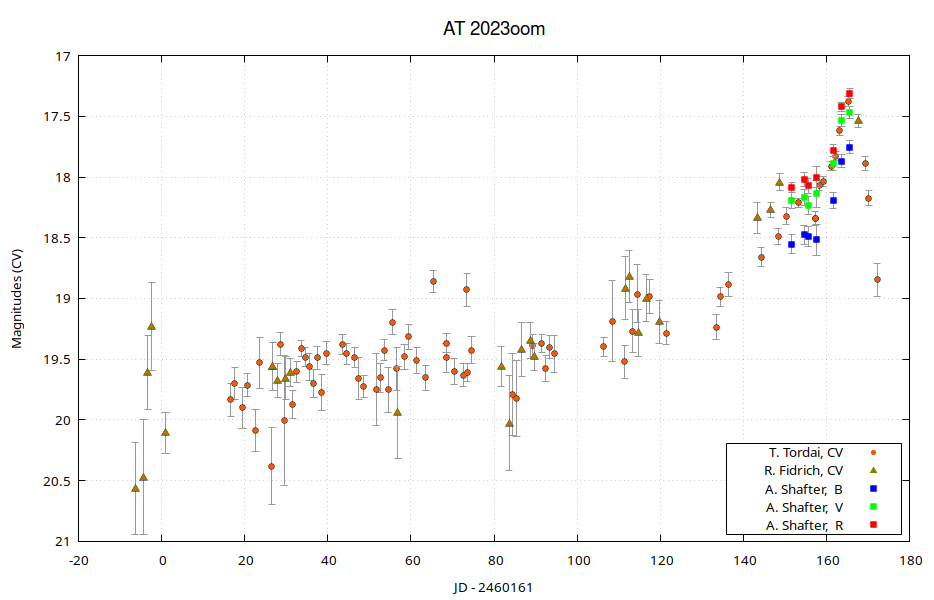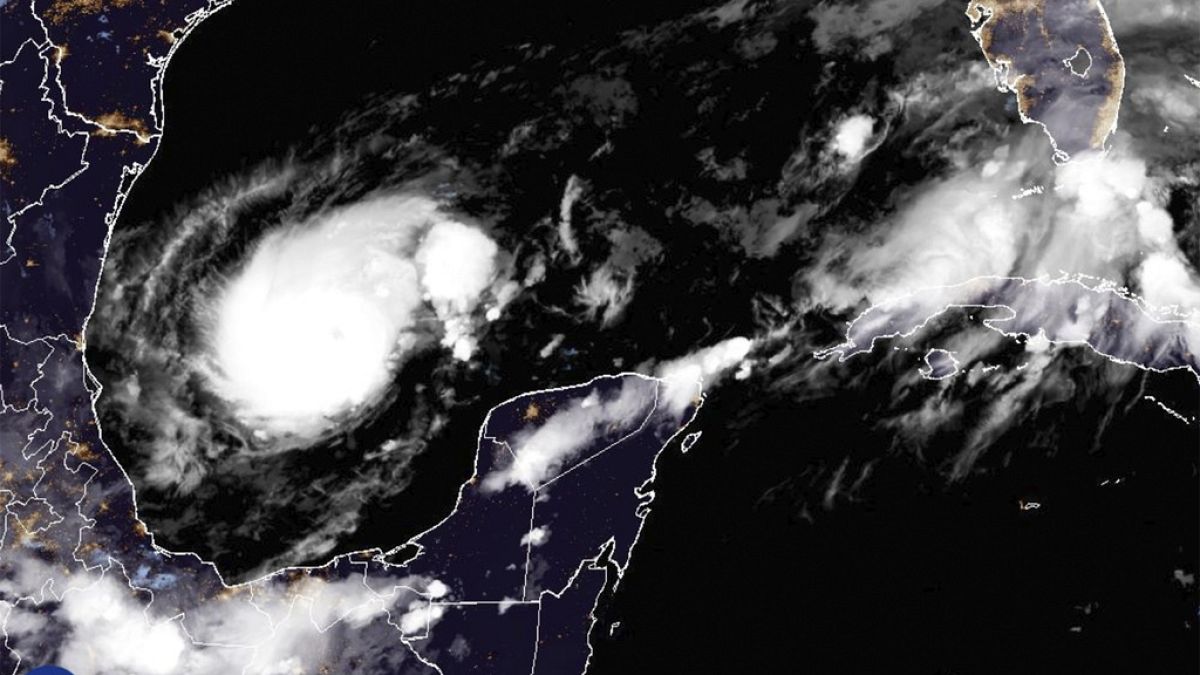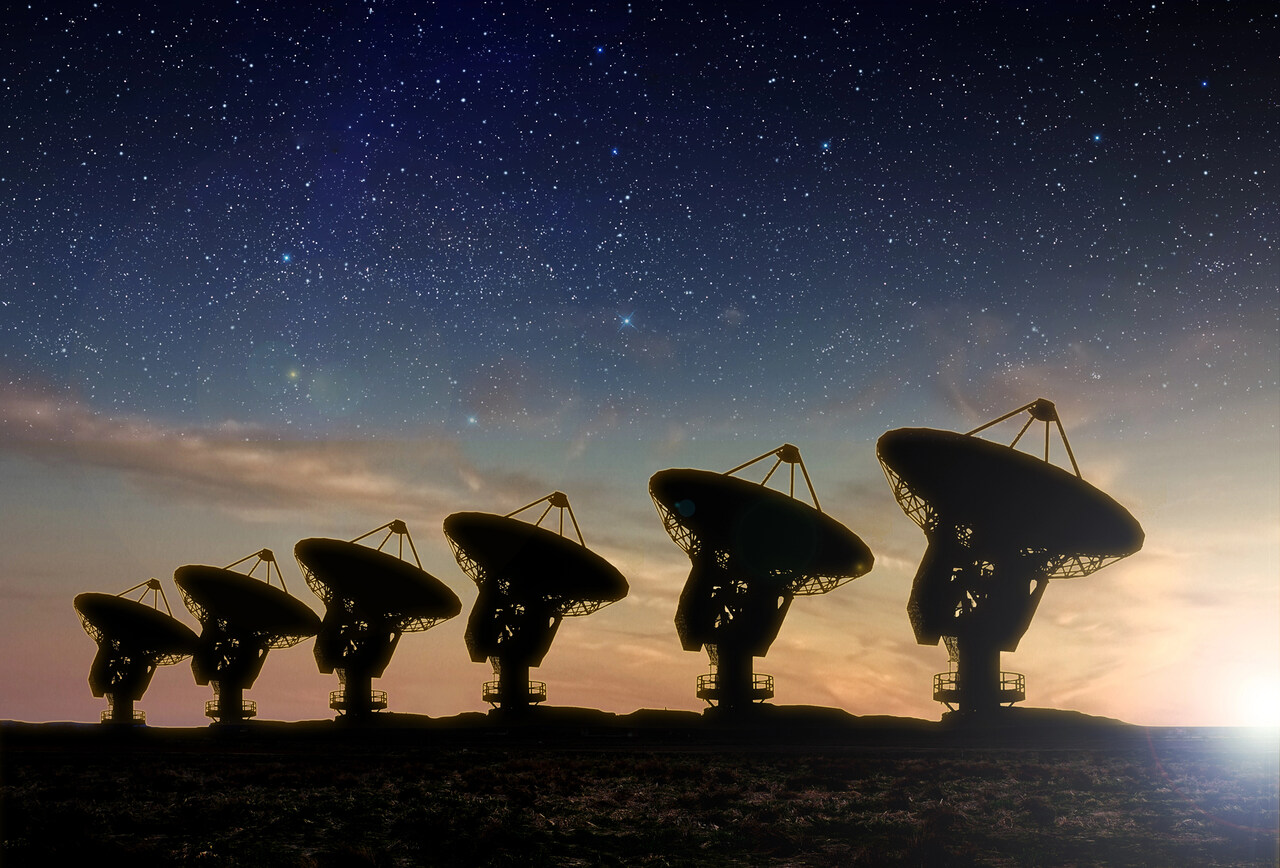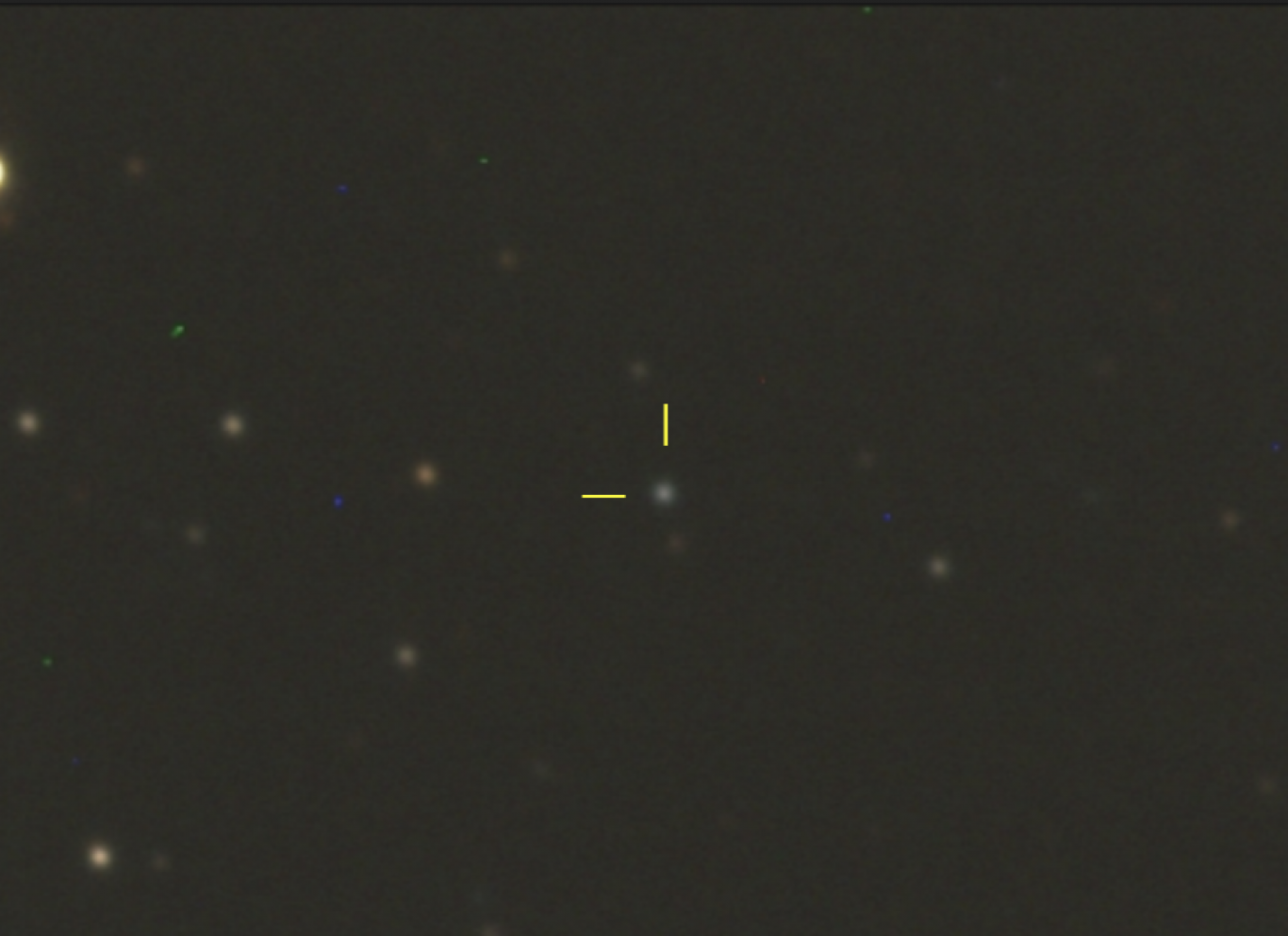The nova, discovered by an amateur galactic astronomer last August in our nearest large galaxy, has reached maximum brightness. At the beginning of January, the cosmic phenomenon caused by the temporary brightening of binary stars orbiting close together was already visible from Earth as the brightest stars of the Andromeda Galaxy.
Robert Fidrych, known as Vidusz in amateur astronomy circles, told Qubit last year at the Galactic Meteorological Observatory how he found the supernova candidate known as AT 2023oom (Vend51) in the Andromeda Nebula on August 5. More than a month later, at the end of September, Japanese astronomers took an image of this object with the 3.8-meter diameter telescope of Kyoto University, confirming that Wiedrich had indeed found an extragalactic object, that is, a slow nova outside the Milky Way. road.
photo_camera
A color image compiled by Fidrich using B, V, and R optical filter CCD images of nova AT 2023oom taken by astronomer Professor Allen Shafter using the 1.06-meter telescope at the University of San Diego's Mount Laguna Observatory.
Photo: Allen Shafter/Robert Fidrich
“That's a lot of brightness at the distance of the Andromeda Nebula,” Widrich told Qubit of the maximum brightness of 17.5 magnitude that the nova reached in early January. According to the amateur astronomer, only the brightest giant stars in the galaxy located 2.5 million light-years away are capable of achieving such apparent brightness (that is, as observed from Earth).
A nova is created when a white dwarf star in a binary system absorbs material from another star that comes too close to it. When it falls on the white dwarf star, it heats up and begins to merge. As a result of the energy generated in this way, the star gets rid of the hydrogen shell that has fallen on it, resulting in a temporary brightness itself, lasting up to months or years.
In recent months, Wiedrich has been tracking the nova's changes with his friend, amateur astronomer Tamas Torday, through photographic observations. In early January, at the request of the Fidrich family around Christmas, Allen Shafter of San Diego State University joined the nova investigation. Professor of astronomy Also, having already seen that the nova is starting to get noticeably brighter.
It's rare to have such a long glow
Shafter was contacted via private channels around Christmas, and he is one of the leading experts on novae in the Andromeda Galaxy. The professor began photographing the nova with one of the university's telescopes, then on Astronomer's Telegram, a site for quick publication of astronomical observations, with Fidrich and Torday on Tuesday. advertisement He announced that the nova had reached its maximum brightness. It happened on January 17, after its brightness faltered after a week-long pause.

photo_camera
The light curve is made from observations of the AT 2023oom nova so far
Graphics:
Robert Fidrych
According to the amateur astronomer, AT 2023oom's nova is special because of its slow increase in brightness over the course of five months, and is “very rare and unique.” The nova previously discovered in the galaxy reached its maximum brightness in just two and a half months, that is, in half the time compared to AT 2023oom. According to Fidrich, this magnitude of 17 to 17.5 is what Andromeda Nebula supernovas typically reach, but they can sometimes be much brighter than that. This brightness is already below the limit that can still be seen on a dark night during visual observation with the best galactic amateur binoculars.
But what if we saw a bright supernova with a magnitude of about 16 in our cosmic environment? If the object were 32 light-years away from us, that is, farther than the closest star to the sun, Proxima Centauri, according to Fidrich, its brightness in the sky would be between the brightness of Venus and the full moon.
What then?
The nova began to fade after Jan. 17, and independent observations by Torday and Luca Bartek, a Hungarian amateur astronomer living in Switzerland, showed that the object was now much fainter than it was at the maximum, Fidrich said. The Fidrichs hope that because it is a slow nova, its brightness will not decrease for several months to the point that it is no longer observable, and it may produce smaller flares.
Fidrich explained that it is difficult to observe the Andromeda Galaxy from Hungary between the beginning of March and mid-May, because it is already very close to the horizon in the evening hours. However, even then and after, they continue to measure the nova, and encourage other amateur and astronomers to do so as well. According to Fidrich, the observations can be used to continually monitor how this star is actually behaving and whether it is producing new brightness.
The nova still currently appears blue, but based on previous instances, according to Fidrich, it is conceivable that after maximum, although optically fading, the deep red color Alpha hydrogen range, and its brightness increases. This can be detected through brightness measurements using a narrow-band hydrogen alpha filter. However, almost only professional astronomers have access to the hydrogen alpha filters required for this purpose. By analyzing the profile and displaying the spectral lines using additional color images, it will also be possible to determine the speed at which matter is being thrown out of the star system.
In recent days, Chinese amateur astronomers have discovered a bright nova, AT 2024aoc, not far from the Wiedrich nova. According to Fidrich, those who discover the nova discovered by the amateur Hungarian astronomer will be able to collect measurements of the newly discovered object in the following period.





































![[s] Alien Abductions in Manhattan: A New Documentary Series on Netflix [s] Alien Abductions in Manhattan: A New Documentary Series on Netflix](https://cdn.sortiraparis.com/images/80/69688/1116559-enlevement-extraterrestre-a-manhattan-une-nouvelle-serie-documentaire-sur-netflix.jpg)





